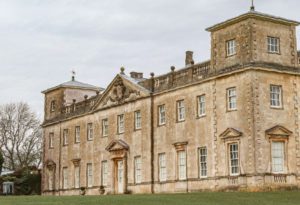Lord of the Butterflies
In 1940 following the death of his mother, Vernon St.John 6th Viscount Bolingbroke had little option but to leave the dilapidated mansion and surrounding estate his family had called home for over 500 years. It had been a slow but relentless decline in family fortunes that caused such a break, but if Vernon was down, he was not out. Despite the blight World War One cast over his life, the great blow of his mother’s death, and the abandonment of Lydiard Park, Vernon found solace and amusement in nature.
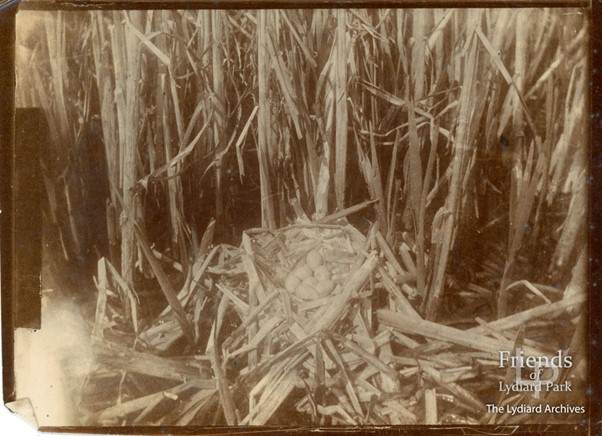
Early photograph of bird’s eggs and nest taken by Vernon St.John.
Childhood nature spotting expeditions on his bicycle, encouraged and accompanied by Lydiard vicar Revd. Percy Harrison, had developed into a deep understanding and love of the Wiltshire countryside. Vernon also developed an ability to write well, so much so, the poet and broadcaster John Betjeman invited him to contribute Nature Notes to the first edition of A Shell Guide to Wiltshire (1939) which Betjeman was editing. He updated those notes for the 1956 edition, edited by David Verey.
Casting around for a new place to live after the War, Vernon selected The New Forest on the basis of it being unspoilt and home to a wide range of butterflies and moths – his principal interest. Either Dorset or Hampshire had been recommended by Frederick W Frohawk an eminent Lepidopterist and zoological artist with whom Vernon regularly corresponded. Frohawk was the author of Natural History of British Butterflies (1914), The Complete Book of British Butterflies (1934) and Varieties of British Butterflies (1938).
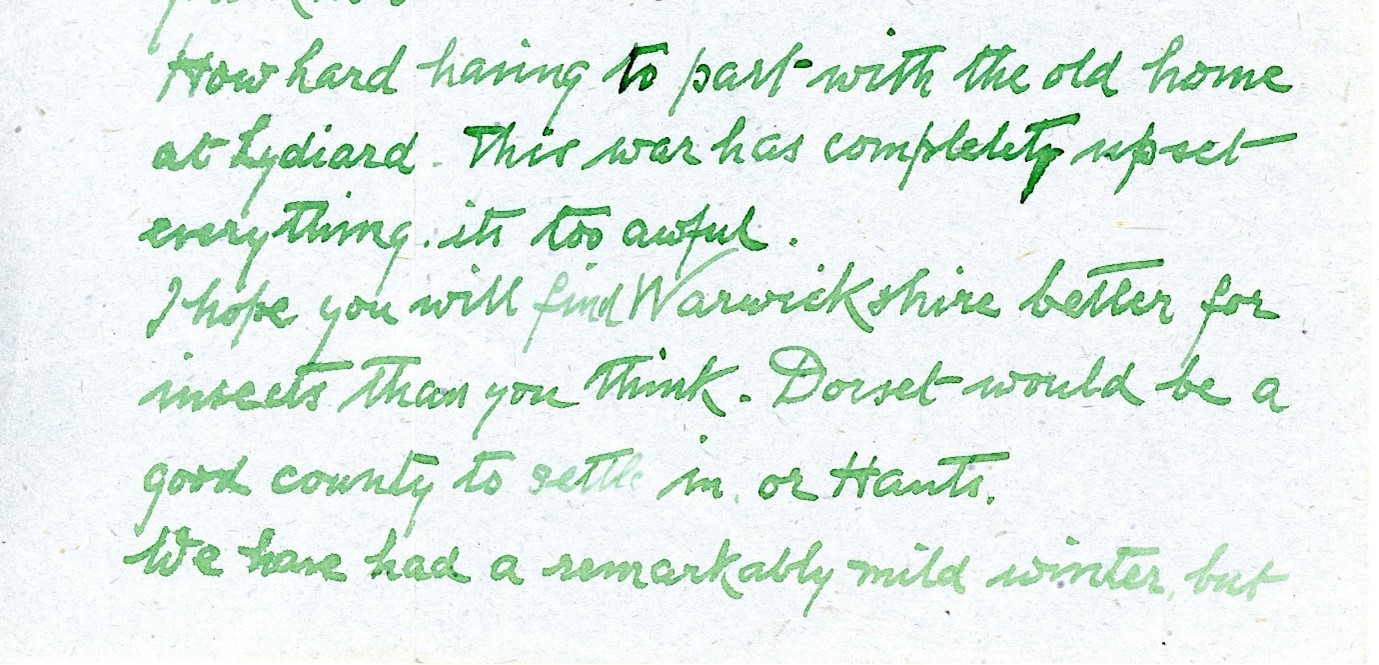
Extract from a letter from FW Frohawk to Vernon St.John 21st March 1943, recommending Dorset and Hampshire as a ‘good country to settle in’.
In 1950 Vernon married Frohawk’s daughter Valezina, named by her father after a Silver-washed Fritillary butterfly. Sadly their marriage ended in annulment two years later.
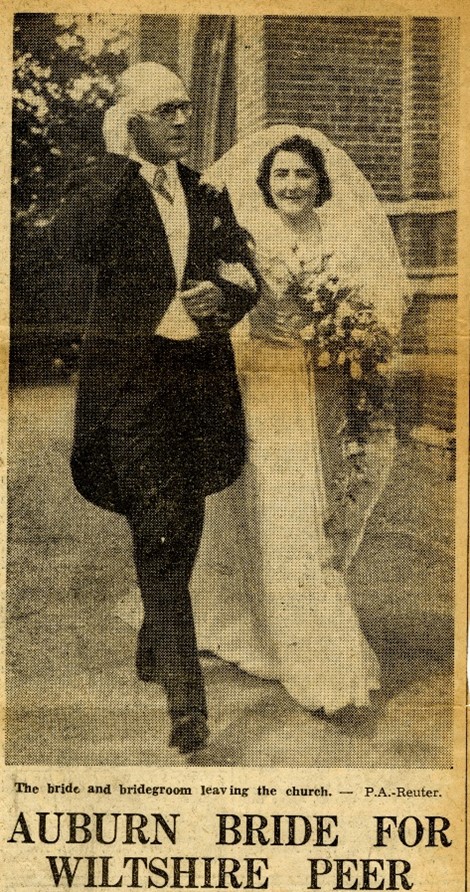
News cutting of the wedding of Vernon St.John 6th Viscount Bolingbroke and Miss Valezina Frohawk, Summer 1950
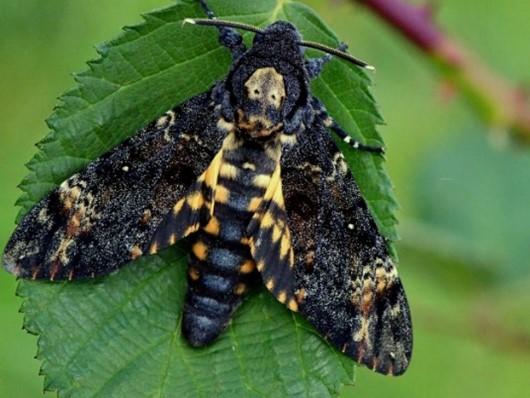
Deaths head hawk moth; Ervin Szombathely, Butterfly Conservation
Back at home in his cottage near Ringwood Vernon pursued his passion for butterfly and moth collecting, observing and writing about wild life and the countryside for the Ringwood and Fordingbridge Journal and giving talks to interested groups. Local children were keenly alert to his knowledge and regularly called at the cottage to show off their finds. In the following extract from his article Pirate Moth (September 1967) a squeaking pupa had raised their expectations:
‘This is the moth for the appearance of the large hawk moths ….the awe-inspiring death’s head hawk moth…. With forewings of various shades of velvety brown, black and ocherous, and hindwings of deep orange with two transverse black bands across them, it carries on the thorax a skull and crossbones in true pirate fashion.

Deaths head hawk moth caterpillar: Sam Whitfield, Butterfly Conservation
Never a common species, it is, if found at all, usually in the pupal state and turned up in potato fields, the leaves of which are its food. …Not only is the moth able to emit a mouse-like squeak, but so in variable degree can the larva and pupa. Such is the attraction of the pupa, that a number of small boys brought me a specimen for confirmation. “What are you going to do with it?” I asked. “Breed death’s head moths and start a farm, “ piped up one of them. How like a boy! By the look of the unfortunate pupa, it was clear that it had suffered from an overdose of inspection and its chances of survival were accordingly remote, so it is hardly surprising that a new enterprise has not emerged to add to Ringwood’s industries.’
When Vernon died in 1974, his funeral took place at St. Mary’s Lydiard Tregoze. His ashes were buried in the churchyard and a butterfly carved on his gravestone. What is less well known is that his butterfly collection was acquired by The National Museum of Wales thanks to the foresight of Vernon’s long term companion and housekeeper Miss Catherine McClean.
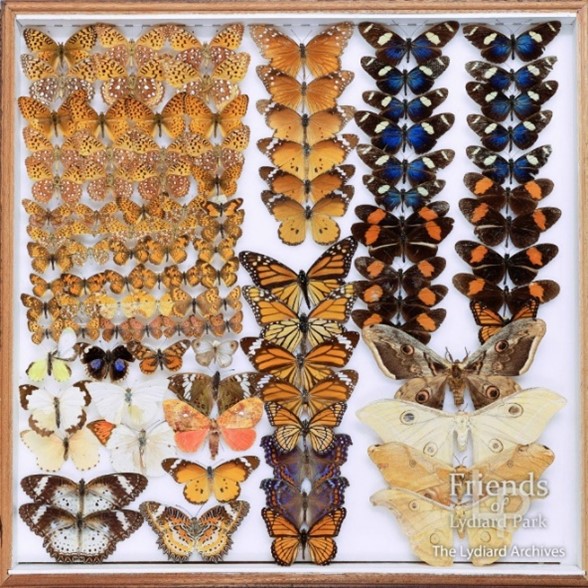
Tray of butterflies from the Bolingbroke collection at The National Museum of Wales
Postscript
The phrase Lord of the Butterflies was coined by the late Canon Brian Carne, former Vicar of St. Mary’s Lydiard Tregoze and Friends of Lydiard founder. Brian Carne led the funeral service for Vernon St.John 6th Viscount Bolingbroke and later published a selection of his nature articles in the Reports of the Friends of Lydiard Tregoz. For more on the Lord of the Butterflies, including articles and correspondence, visit The Lydiard Archives.
Today there are lots of ways to discover more about British Butterflies and Moths and become involved in their conservation by visiting the Butterfly Conservation website– saving butterflies, moths and our environment.
